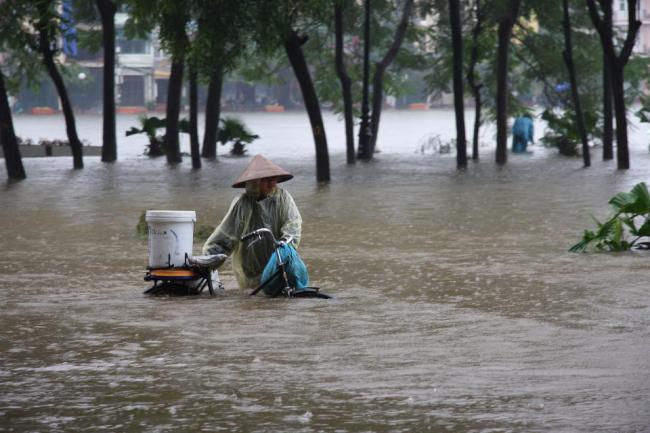
The report, entitled The Human Cost of Weather Related Disasters finds that the five countries hit by the highest number of disasters are the United States, China, India, Philippines, and Indonesia.
“Weather and climate are major drivers of disaster risk and this report demonstrates that the world is paying a high price in lives lost,” said Margareta Wahlström, head of UNISDR, in a press release.
“Economic losses are a major development challenge for many least developed countries battling climate change and poverty,” she continued.
The report and analysis compiled by UNISDR and the Belgian-based Centre for Research on the Epidemiology of Disasters (CRED) demonstrates that since the first UN climate change conference (COP1) in 1995, 606,000 lives have been lost and 4.1 billion people have been injured, left homeless or in need of emergency assistance as a result of weather-related disasters.
The report also highlights data gaps, noting that economic losses from weather-related disasters are much higher than the recorded figure of US$1.891 trillion, which accounts for 71 per cent of all losses attributed to natural hazards over the twenty-year period.
Only 35 per cent of records include information about economic losses. UNISDR estimates that the true figure on disaster losses – including earthquakes and tsunamis – is between US$250 billion and US$300 billion annually.
“In the long term, an agreement in Paris at COP21 on reducing greenhouse gas emissions will be a significant contribution to reducing damage and loss from disasters which are partly driven by a warming globe and rising sea levels,” Wahlström explained.
“For now, there is a need to reduce existing levels of risk and avoid creating new risk by ensuring that public and private investments are risk-informed and do not increase the exposure of people and economic assets to natural hazards on flood plains, vulnerable low-lying coastlines or other locations unsuited for human settlement.”
Wahlström recalled that the development year started last March with the adoption of the Sendai Framework for Disaster Risk Reduction, a 15-year package endorsed by the UN General Assembly, which sets out clear targets for a substantial reduction in disaster losses, including mortality, numbers of people affected, economic losses and damage to critical infrastructure including schools and hospitals.
Meanwhile, Professor Debarati Guha-Sapir, the head of CRED, said climate change, climate variability and weather events are a threat to achieving the Sustainable Development Goals’ overall target of eliminating poverty.
“We need to reduce greenhouse gas emissions and tackle other risk drivers such as unplanned urban development, environmental degradation and gaps in early warnings,” she said.
She added, “This all requires ensuring people are risk informed and strengthening institutions which manage disaster risk.”
According to the report, Asia accounts for the “lion’s share of disaster impacts” including 332,000 deaths and 3.7 billion people affected. The death toll in Asia included 138,000 deaths caused by Cyclone Nargis which struck Myanmar in 2008.
In total, an average of 335 weather-related disasters were recorded per year between 2005 and 2014, an increase of 14 per cent from 1995-2004, and almost twice the level recorded during 1985-1995.
The extent of the toll taken by disasters on society is revealed by other statistics from CRED’s Emergency Events Data Base, or EM-DAT, which shows that 87 million homes were damaged or destroyed over the period of the survey.
The analysis also highlights that floods accounted for 47 percent of all weather-related disasters from 1995-2015, affecting 2.3 billion people and killing 157,000. Storms were the deadliest type of weather-related disaster, accounting for 242,000 deaths or 40 percent of the global weather-related deaths, with 89 per cent of these deaths occurring in lower-income countries.
Overall, heatwaves accounted for 148,000 of the 164,000 lives lost due to extreme temperatures, with 92 per cent of deaths occurring in high-income countries.
Finally, drought reportedly affects Africa more than any other continent, with EM-DAT recoding 136 events there between 1995 and 2015, including 77 droughts in East Africa alone. The report also recommends that there needs to be improved data collection on indirect deaths from drought.
Photo:IRIN/Tung X. Ngo/www.justearthnews.com
Support Our Journalism
We cannot do without you.. your contribution supports unbiased journalism
IBNS is not driven by any ism- not wokeism, not racism, not skewed secularism, not hyper right-wing or left liberal ideals, nor by any hardline religious beliefs or hyper nationalism. We want to serve you good old objective news, as they are. We do not judge or preach. We let people decide for themselves. We only try to present factual and well-sourced news.







